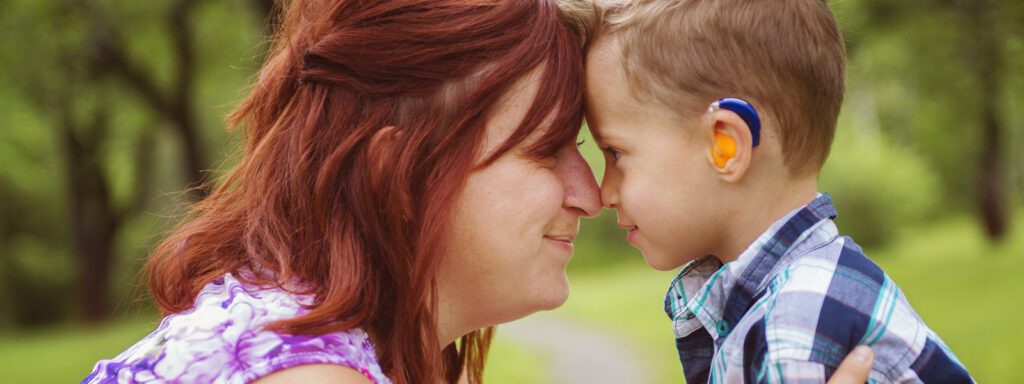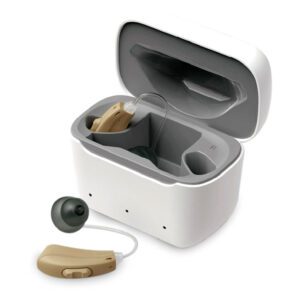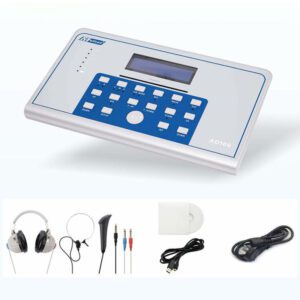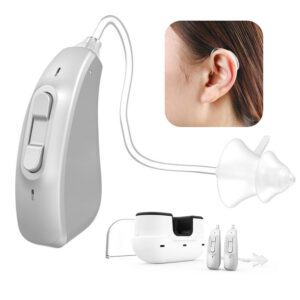
hearing Loss is a common sensory impairment that affects millions of people worldwide. According to the World Health Organization, approximately 466 million people worldwide have disabling hearing loss, and this number is expected to rise to 630 million by 2030 and 900 million by 2050.
Hearing loss can have a significant impact on communication, social interaction, and quality of life. Fortunately, hearing Aids can help improve hearing and communication abilities, and provide greater access to the world of sound.
However, for first-time hearing aid users, adapting to hearing Aids can be challenging and require a proper rehabilitation plan. In this article, we will discuss the key steps to building a scientific rehabilitation plan for first-time hearing aid users.
Step 1: Overcoming Hearing Difficulties
It is recommended to start a “listening training” course in a familiar environment, carefully read the user manual, and become familiar with the proper use of hearing aids. Initially, it is advisable to avoid wearing hearing aids in places such as supermarkets or airports where there is excessive background noise.
Step 2: Gradual Increase in Wear Time
To start, it is important to not wear hearing aids for long periods. In the first few days, the wear time should not exceed one to three hours. It is also important to take breaks if feeling nervous or tired. Increasing wear time gradually each day allows for better adaptation to surrounding sounds.
Step 3: Control Sound Volume
It is important to not adjust the volume too high as it may lead to distortion of sound and not necessarily improve understanding. Also, avoid trying to hear sounds from a distance. In general, focusing on conversations within 2 to 3 yards is sufficient at this stage.
Step 4: Adaptation to Hearing Aids
Ideally, hearing aids should become a part of daily life, similar to glasses or contact lenses for correcting vision. However, this process takes time and effort. It is important to see hearing aids as a friend and not just a device outside the body.
Step 5: Coping with Noisy Environments
Hearing aid users need to concentrate their attention in noisy environments, just like people with normal hearing who try to filter out unwanted noise. However, if hearing loss has been present for a long time, this ability may be temporarily lost. With proper training and adjustment, hearing aid users can experience the world in a new and exciting way, discovering all the different sounds around them and finding joy in everyday experiences.
Step 6: Consultation with Audiologists
It is recommended to consult with an audiologist to determine the best type of hearing aid for individual needs. Audiologists can provide proper fitting and programming of hearing aids, as well as additional counseling on hearing loss and communication strategies.
Step 7: Maintenance and Cleaning of Hearing Aids
Regular maintenance and cleaning of hearing aids can prolong their lifespan and ensure optimal performance. It is important to follow the manufacturer’s instructions for cleaning and storing hearing aids, and to schedule routine maintenance appointments with an audiologist.
Step 8: Integration of Hearing Aids in Daily Life
With consistent use and proper care, hearing aids can significantly improve communication and quality of life. It is important to integrate hearing aids into daily life and to communicate with family and friends about hearing needs. This can help create a supportive environment and reduce the stigma associated with hearing loss.
In summary, building a scientific rehabilitation plan for first-time hearing aid users involves overcoming hearing difficulties, gradually increasing wear time, controlling sound volume, adapting to hearing aids, coping with noisy environments, consulting with audiologists, maintaining and cleaning hearing aids, and integrating hearing aids into daily life. With proper guidance and support, hearing aid users can achieve a more fulfilling and enjoyable life experience.



